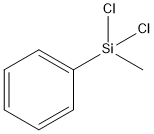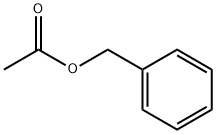Benzyl thiocyanate
Synonym(s):Benzyl rhodanide;Benzyl thiocyanate;Thiocyanic acid benzyl ester, Benzyl rhodanide
- CAS NO.:3012-37-1
- Empirical Formula: C8H7NS
- Molecular Weight: 149.21
- MDL number: MFCD00001832
- EINECS: 221-144-2
- SAFETY DATA SHEET (SDS)
- Update Date: 2025-01-27 09:38:02

What is Benzyl thiocyanate?
Description
Benzyl thiocyanate undergoes regioselective bond dissociation during its electrochemical reduction in acetonitrile at an inert electrode. It is added to stimulate the chlortetracycline biosynthesis during industrial fermentations. It undergoes biotransformation into dibenzyl disulphide by Streptomyces aureofaciens.
Chemical properties
ALMOST WHITE TO YELLOW CRYSTALS OR CRYST. POWDER
The Uses of Benzyl thiocyanate
Benzyl Thiocyanate is found to increase the protein production of Streptomyces aureofaciens. Inhibits methylazoxymethanol acetate-induced intestinal carcinogenesis and reduces unscheduled DNA synthesi s for some genotoxic carcinogens in rats.
The Uses of Benzyl thiocyanate
Benzyl thiocyanate was used to study the effects of various dietary compounds on the α-hydroxylation of N-nitrosopyrrolidine in male F344 rats in vitro.
What are the applications of Application
Benzyl thiocyanate is effective against MAM-induced intestinal carcinogenesis in rats
What are the applications of Application
Benzyl thiocyanate was used to study the effects of various dietary compounds on the α-hydroxylation of N-nitrosopyrrolidine in male F344 rats in vitro.
Definition
ChEBI: Benzyl thiocyanate is a member of thiocyanates.
Synthesis Reference(s)
Synthesis, p. 184, 1977
Tetrahedron Letters, 18, p. 4417, 1977 DOI: 10.1016/S0040-4039(01)83524-3
General Description
Benzyl thiocyanate undergoes regioselective bond dissociation during its electrochemical reduction in acetonitrile at an inert electrode. It is added to stimulate the chlortetracycline biosynthesis during industrial fermentations. It undergoes biotransformation into dibenzyl disulphide by Streptomyces aureofaciens.
Hazard
Strong irritant to skin, tissue. Moderate fire hazard.
Safety Profile
Poison by subcutaneous andintraperitoneal routes. Whenheated to decomposition it emits very toxic fumes ofNOx, SOx, and CN??.
Purification Methods
Crystallise the thiocyanate from EtOH or aqueous EtOH. [Beilstein 6 H 460, 6 IV 2680.]
Properties of Benzyl thiocyanate
| Melting point: | 39-41 °C (lit.)
39-41 °C |
| Boiling point: | 230-235 °C (lit.) |
| Density | 1.32 |
| refractive index | 1.6000 (estimate) |
| Flash point: | >230 °F |
| storage temp. | Store at <= 20°C. |
| solubility | diethyl ether: soluble0.5g/10 mL, clear to very faintly turbid, colorless to almost colorless |
| form | Solid |
| color | Orange-red crystals or solid |
| Water Solubility | insoluble |
| Sensitive | Moisture Sensitive |
| BRN | 1859726 |
| CAS DataBase Reference | 3012-37-1(CAS DataBase Reference) |
| NIST Chemistry Reference | Thiocyanic acid benzyl ester(3012-37-1) |
| EPA Substance Registry System | Thiocyanic acid, phenylmethyl ester (3012-37-1) |
Safety information for Benzyl thiocyanate
| Signal word | Warning |
| Pictogram(s) |
 Exclamation Mark Irritant GHS07 |
| GHS Hazard Statements |
H412:Hazardous to the aquatic environment, long-term hazard |
| Precautionary Statement Codes |
P273:Avoid release to the environment. P280:Wear protective gloves/protective clothing/eye protection/face protection. |
Computed Descriptors for Benzyl thiocyanate
Benzyl thiocyanate manufacturer
Padmaja Expo
New Products
4,4-Difluoropiperidine hydrochloride tert-butyl 9-methoxy-3-azaspiro[5.5]undecane-3-carboxylate Indole Methyl Resin N-Isopropylurea N,N-Dicyclohexylcarbodiimide(DCC) MELDRUMS ACID 5-METHYLISOXAZOLE-4-CARBOXYLIC ACID Magnessium Bis glycinate Zinc ascorbate 1-bromo-2-butyne 2-acetamidophenol 9(10H)-anthracenone Erythrosin B, 4-Piperidinopiperidine 2-((4-morpholinophenylamino) (methylthio) methylene) malononitrile 2,4-dihydroxybenzaldehyde 3-(4-morpholinophenylamino)-5-amino-1H-pyrazole-4-carbonitrile Methyl 2-methylquinoline-6-carboxylate 2,6-dichloro-4-nitropyridine 4-Bromo-2-chlorobenzonitrile 2-(benzylamino)acetic acid hydrochloride 4-(tert-Butoxycarbonylamino)but- 2-ynoic acid 3,4-dihydro-2H-benzo[b][1,4]dioxepine 1-Phenyl-1-cycloprppanecarboxylicacidRelated products of tetrahydrofuran








You may like
-
 Benzyl Thiocyanate 3012-37-1 99%View Details
Benzyl Thiocyanate 3012-37-1 99%View Details
3012-37-1 -
 3012-37-1 99%View Details
3012-37-1 99%View Details
3012-37-1 -
 Benzyl Thiocyanate CAS 3012-37-1View Details
Benzyl Thiocyanate CAS 3012-37-1View Details
3012-37-1 -
 Benzyl thiocyanate CAS 3012-37-1View Details
Benzyl thiocyanate CAS 3012-37-1View Details
3012-37-1 -
 Benzyl thiocyanate CAS 3012-37-1View Details
Benzyl thiocyanate CAS 3012-37-1View Details
3012-37-1 -
 Benzyl ThiocyanateView Details
Benzyl ThiocyanateView Details
3012-37-1 -
 Benzyl Thiocyanate, LiquidView Details
Benzyl Thiocyanate, LiquidView Details
3012-37-1 -
 20677-73-0 (2,2-diethoxyethyl)methylamine 98%View Details
20677-73-0 (2,2-diethoxyethyl)methylamine 98%View Details
20677-73-0
